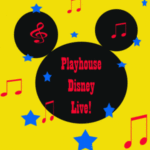Introduction
Randolph Frederick Pausch (October 23, 1960 – July 25, 2008) was an American professor of computer science, human-computer interaction and design at Carnegie Mellon University (CMU) in Pittsburgh, Pennsylvania.
Prior to his death from pancreatic cancer, Randy Pausch was most famous his “Really Achieving Your Childhood Dreams” lecture speech (also referred to as “The Last Lecture”) that was delivered on September 18, 2007. Videos of the speech have been hosted on CMU’s dedicated webpage to Randy Pausch and on YouTube. So popular was his speech that, it was later turned into a book that went on to be a New York Times best-seller.
Basic Background
Randy Pausch was born to Fred and Virginia Pausch in Baltimore, Maryland. His father sold insurance, while his mother taught English. After graduating from Brown University with a bachelor’s degree in 1982, Pausch went on to graduate from CMU with a doctorate in computer science in 1988. From there, Pausch was employed as an assistant and associate director in the University of Virginia’s Department of Computer Science till 1997.
1 year after moving to CMU in 1997, Pausch co-funded the Entertainment Technology Center at CMU together with Don Marinelli. Also serving as Director of CMU’s Stage 3 research group, Pausch oversaw the development of Alice, a rapid-prototyping environment for interactive 3d graphics and virtual reality which he had initiated.
An award-winning teacher and researcher, he also worked with big companies like Adobe, Google, Electronic Arts (EA).
The Last Lecture
Randy Pausch’s magnum opus comes in the form of his lecture speech “Really Achieving Your Childhood Dreams” delivered on September 18, 2007. Pausch later worked with Wall Street Journal reporter Jeff Zaslow to turn the contents of his speech into a book titled “The Last Lecture”.
Even when faced with imminent death from pancreatic cancer, Pausch was upbeat and humorous throughout his entire speech. From talking about his early childhood dreams, how he accomplished (or tried to accomplish) them, and how sometimes, he had to change goals and adjust objectives along the way. Pausch also talked about how he tried in the best of his efforts to help others accomplish theirs, ended by encouraging the audience to achieve their dreams and to help enable the dreams of others.
The video of his lecture has reached millions and touched many people. Thousands of people contacted him later to say he had made an impact on their lives. His lecture also had a positive effect on people who were terminally ill.”I’m dying and I’m having fun. And I’m going to keep having fun every day, because there’s no other way to play it.
Based on this speech, a book was later compiled to showcase “last lecture” speeches from professors from all over the world often give speeches. During such speeches, the professors imagine their death and then speculate on what is most important to them in their lives. As contributed from Urmila: “… sadly enough in the case of Randy Pausch, he did not need to imagine his death, as by this time he was already aware of his imminent death, his pancreatic cancer having been diagnosed as terminal. Yet, the speech he gave that September day was not about dying, but living. He very rightly said, “Time is all you have…and you may find one day that you have less than you think”. I actually agree with him. We all know that we will die one day or the other and I guess life is not about worrying about when it is that we will die but what we can do to make our lives seem fruitful. As Randy Pausch said, “We cannot change the cards we are dealt, just how we play the hand”
Death of Randy Pausch
Randy Pausch died of pancreatic cancer at the age of 47 on Friday, July 25th, 2008 in Chesapeake, Virginia. He is survived by his wife Jai, and 3 children: Dylan, Logan and Chloe.
Alice
Alice is a radically different programming platform that helps students to learn computer programming. This software was aimed at attracting more women to the world of programming.Alice is an innovative 3D programming environment that makes it easy to create animations for storytelling and games. It’s interesting to note that Alice 3.0 software features characters from The Sims(A groundbreaking game produce by Electronic Arts).
- Randy Pausch helped develop the Alice software teaching tool. Alice is a tool to help introductory computing students to do things like easily create animations to tell a story, play an interactive game or even video making and practically anyone, young or old can use it. It uses drag and drop techniques to allow a more engaging programming experience for first time programmers. And the best of all is that Alice is a offered up as a free tool by Carnegie Mellon.
- Alice is a 3-D environment that teaches programming to young people or people without prior knowledge in programming via storytelling and interactive game-playing. It uses Graphical User Interface (GUI) to make programming for first time programmers less frustrating and more engaging.
- Alice tackles some vital problems in educational programming: without the user having to learn syntax or hardcodes, Alice is able to create a conducive environment for 1st-time IT students to learn about the basics of programming fundamentals which are harder to pick up via conventional complex programming languages.
- Alice is a revolutionary method to teach programming, especially to first-time learners. With its interactive 3D interface, users can now create simple games and animations with a click of the mouse; by using the drag and drop method. Alice focuses on object-oriented programming and will give a clear insight to newcomers as to how programming codes are being generated by manipulating the objects in the 3D world. Alice will serve as an excellent introductory programming teaching tool for first-timers, before proceeding to standard programming languages like Java, C# and C++, which are production oriented.
Alice 2.0
Good things about Alice 2.0
It lowers the barrier towards programming because basic programming can only produce command line outputs which may be very discouraging to new programmers aspiring to produce the next Microsoft Windows. This is achieved by vibrant colours and drag-and-drop combined with quite accurate “what you see is what you get”. Also, the “language” in Alice is expressed quite close to our naturally language.
Bad things about Alice 2.0
I think Alice is still quite buggy especially the copying and dropping of blocks of code. Also, Alice offers very limit amount of typing. Simple things like x = x + 1 has to be clicked and dragged and dropped.
Story telling Alice
Currently only available on windows: http://www.alice.org/kelleher/storytelling/download.html
- Users of Storytelling Alice spent 42% more time programming than users of Generic Alice.
- Users of Storytelling Alice were more than three times as likely to sneak extra time to work on their programs as users of Generic Alice (51% of Storytelling Alice users vs. 16% of Generic Alice users snuck extra time to program).
- Despite the focus on making programming more fun, users of Storytelling Alice were just as successful at learning basic programming concepts as users of Generic Alice.
Alice 3.0
Carnegie Mellon will be working with PC game maker Electronic Arts Inc. (who owns “The Sims” series of games). By using characters from “The Sims”, Alice avatars will be more life-like and customizable
View the article
Reflection on Alice 2.0
While using Alice, i came across Popfly (poster for the mashup competition). I feel that their fundamental similiarity is that they allow applications to be made by drag-and-drop. I think these events signify a programming paradigm to a “higher level” language.
Programming used to be (and still mostly is) typing of words and compiled by the compiled. The appearance of Alice and Popfly changes the “language” used. Instead of plain text for symbols, identifiers; the same symbols and identifiers are represented using graphics.
I’m not sure how the early languages fared in terms of inherent bugs while compiling, Alice does have a long way to go to become a “language” to be taken as seriously as Java.
I also feel that Alice has brought animating to a level possible for people of almost all ages. One of the commercial implications might be that the advertising industry will face more competition because 3D videos can be made easier.
Famous Quotes by Randy Pausch
- Brick walls are there for a reason. The brick walls are not there to keep us out. The brick walls are there to show how badly we want something. Because the brick walls are there to stop the people who don’t want something badly enough. They are there to keep out the other people.
- Be willing to apologize. Proper apologies have three parts: 1 ) What I did was wrong. 2 ) I’m sorry that I hurt you. 3 ) How do I make it better? It’s the third part that people tend to forget…. Apologize when you screw up and focus on other people, not on yourself.
- Experience is what you get when you didn’t get what you wanted…. I probably got more from that dream [of playing professional football] and not accomplishing it than I got from any of the ones that I did accomplish.
- The best piece of parenting advice I’ve ever heard is from flight attendants. If things get really tough, grab your own oxygen mask first.
- Be good at something; it makes you valuable…. Have something to bring to the table, because that will make you more welcome.
7 things that mattered most to Randy Pausch
- Always Have Fun
- Dream Big — Give yourself permission to dream. Fuel your kids’ dreams too. Once in a while, that might even mean letting them stay up past their bedtimes.
- Ask for What You Want — More often than you’d suspect, the answer you’ll get is, “Sure.”
- Dare To Take a Risk — Experience is what you get when you don’t get what you wanted. And it can be the most valuable thing you have to offer.
- Look for the Best In Everybody
- Make Time for What Matters — Time is all you have. And you may find one day that you have less than you think.
- Let Kids Be Themselves
Other Interesting Facts
- Just thought of adding on, Pausch spent a year (1995) working at Walt Disney Imagineering’s Virtual Reality Studio before embarking on his teaching career at Virginia.
- Randy Pausch kept a blog documenting his feelings and his life in the later stages of pancreatic cancer. He was also passionate about creating awareness amongst the public about pancreatic cancer. His online journal can be found through this link http://download.srv.cs.cmu.edu/~pausch/news/index.html.
- Randy Pausch is listed on Times “The World’s Most Influential People” under Heroes & Pioneers Here’s the link –>http://www.time.com/time/specials/2007/article/0,28804,1733748_1733756_1736194,00.html
- Having three to six months more to live, Randy Pausch shares his tips for making the most of your time. Watch the video
His love for his family is what everyone should know and should learn from. When he found out he was going to die, he told himslef that he “couldn’t allow himself to wallow in self pity.” Instead, he should walk out any self-pity and live the most out of his life, providing whatever he could to his family. He even said, “I mean, the metaphor I’ve used is … somebody’s going to push my family off a cliff pretty soon, and I won’t be there to catch them. And that breaks my heart. But I have some time to sew some nets to cushion the fall. So, I can curl up in a ball and cry, or I can get to work on the nets.”
Notable Awards
- Karl V. Karlstrom Outstanding Educator Award
- ACM Special Interest Group on Computer Science Education Award for Outstanding Contributions to Computer Science Education
- The 2008 Time 100





